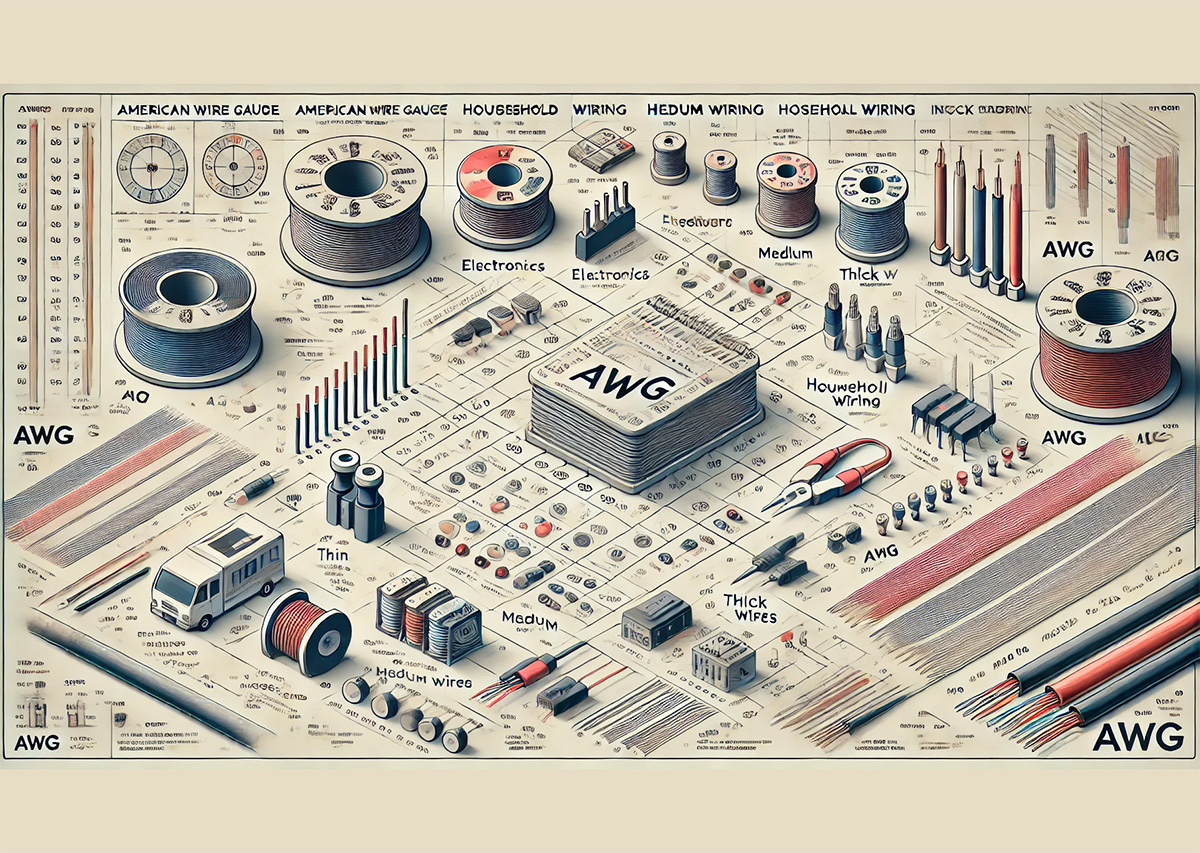In the world of wires and cables, one of the most commonly used standards for determining their thickness is the American Wire Gauge, also known as AWG. It is a classification system primarily used in North America that specifies the diameter of electrical wires. In this article, we will take a closer look at what AWG is, how it works, and why it is so important in the electrical industry.
What is AWG?
AWG, or American Wire Gauge, is a system for measuring the diameter of electrical wires that was developed in the United States in the mid-19th century. This system covers a range of wire sizes, from very thin to very thick, and is particularly useful in determining electrical conductivity and the wire’s ability to carry current.
How does AWG work?
The AWG scale is inversely proportional to the wire diameter – the smaller the AWG number, the larger the wire diameter. For example, a wire with a 10 AWG number has a larger diameter than a wire with a 20 AWG number. This inverse relationship may seem counterintuitive, but it is widely accepted and used in the industry.
Applications of Wires with Different AWG Numbers
- Wires with large AWG numbers (e.g., 24 AWG, 26 AWG): These are thin wires, often used in electronics, telecommunications, and computer devices. They can be used in applications where lower currents are required.
- Wires with medium AWG numbers (e.g., 14 AWG, 16 AWG): These wires are used in household installations, lighting, and medium current loads. They are commonly used in typical electrical installations in homes.
- Wires with small AWG numbers (e.g., 2 AWG, 4 AWG): These are thick wires used in applications requiring the conduction of large currents, such as industrial installations, powering large electrical devices, and in automotive applications.
- Why is AWG Important?
Understanding and properly applying AWG is crucial for the safety and efficiency of electrical installations. Wires with an incorrect diameter can lead to overheating, which in turn can cause fires or damage to devices. Therefore, it is essential to always select wires with the appropriate AWG number for specific applications.
How to Measure AWG?
The diameter of a wire in the AWG scale can be measured using a micrometer or caliper. There are also tables and online calculators that help convert wire diameter to AWG number, which is particularly useful for electricians and engineers.
Summary
American Wire Gauge (AWG) is a fundamental classification system for electrical wires that ensures safety and efficiency in various applications. Understanding how AWG works and its applications is crucial for anyone working with electrical installations.
We hope this article has provided you with the necessary information about AWG. If you have any questions or need further information, please feel free to contact our team of experts at www.wire-processor.eu.
Source:
Wikipedia: American Wire Gauge https://en.wikipedia.org/wiki/American_wire_gauge
National Electrical Code (NEC) https://www.nfpa.org/codes-and-standards/all-codes-and-standards/list-of-codes-and-standards/detail?code=70
Online AWG Calculator https://www.calculator.net/awg-calculator.html


